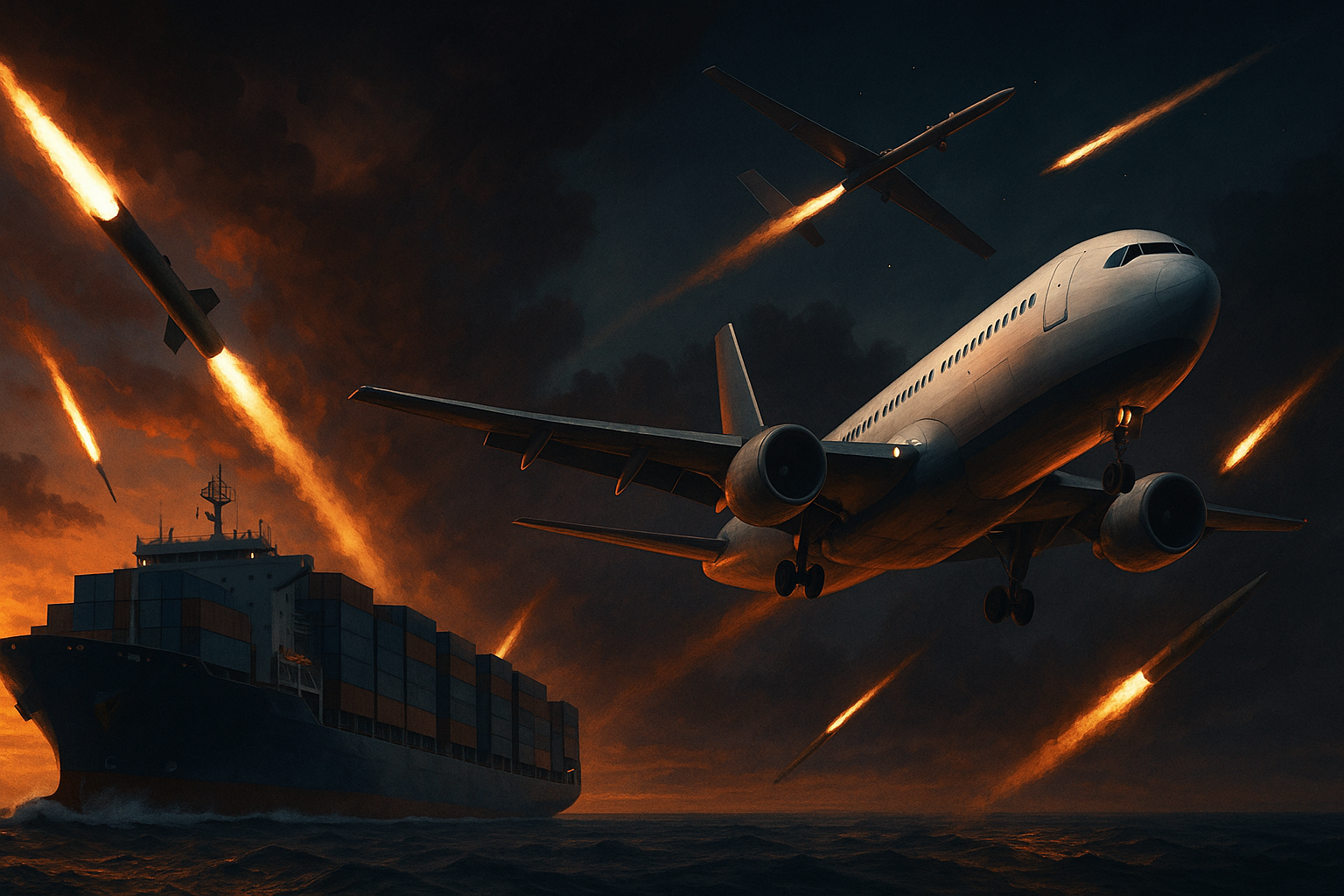For decades, global shipping and aviation routes have been vulnerable to instability, but the nature of the threats has evolved dramatically. Where once piracy off the coast of Somalia dominated headlines, today’s risks are increasingly shaped by state-backed groups, proxy forces, and advanced technologies. The world’s supply chains and air corridors remain essential arteries of commerce, but they now operate in an environment where both traditional criminals and politically motivated actors see strategic opportunities in disruption.
Piracy in the early 2000s became the emblem of non-state maritime insecurity. Armed groups off the Horn of Africa hijacked commercial vessels, extracting ransom payments and driving up the costs of insurance and naval patrols. These attacks were relatively unsophisticated but disruptive, forcing the international community to deploy coalition naval task forces. While piracy declined after 2015 due to coordinated maritime security measures, it never disappeared. Instead, the threat picture expanded. Today, piracy persists in pockets of West Africa and Southeast Asia, but its impact has been overshadowed by a broader category of threats that blur the line between criminal enterprise and geopolitical leverage.
One of the most pressing examples has been the string of attacks in the Red Sea, where Houthi rebels in Yemen—supported by Iran—have used missiles and drones to target commercial vessels transiting one of the world’s busiest maritime chokepoints. These are not opportunistic attacks like piracy; they are strategic actions designed to pressure Western powers and disrupt global shipping flows. As a result, major carriers have been forced to reroute vessels away from the Suez Canal, adding thousands of miles and significant cost to global supply chains. What was once the realm of pirates with small arms is now the domain of proxy groups wielding advanced weaponry.
Aviation has faced similar shifts. While piracy never directly threatened the skies, geopolitical conflicts increasingly spill into civilian airspace. Airlines now reroute flights to avoid areas where missile attacks or electronic warfare, such as GPS spoofing, create unacceptable risks. The downing of Malaysia Airlines Flight MH17 over Ukraine in 2014 was a watershed moment that revealed how quickly a conflict zone could turn into a global aviation tragedy. In today’s environment, spoofing and jamming attacks affecting thousands of flights per day over Eastern Europe highlight how aviation, like shipping, is being drawn into the new era of proxy conflict.
The implications for global commerce are profound. Rerouted ships and planes increase fuel consumption, extend delivery timelines, and raise insurance premiums. For businesses dependent on just-in-time logistics, these delays ripple across economies. For airlines and shipping firms, costs rise even when no direct attack occurs—because the threat itself reshapes routing decisions, training requirements, and operational planning. Security has become not only a safety imperative but also a financial burden.
Governments and international organizations are scrambling to adapt. Naval patrols remain critical, but they are increasingly supplemented with missile defense systems, intelligence-sharing networks, and cyber defense capabilities. In aviation, regulators urge airlines to use layered navigation methods and adopt conservative routing policies when traversing conflict-adjacent zones. Still, many of these responses are reactive rather than preventative, leaving commercial operators to bear the brunt of both cost and risk.
The larger pattern is clear: piracy as we once knew it has given way to proxy wars, where hostile states and their partners weaponize the global commons of air and sea to achieve strategic aims. Instead of hijacking ships for ransom, groups now launch missile strikes to make geopolitical statements. Instead of boarding planes, adversaries use electronic warfare to confuse navigation systems. The tools have changed, but the result is the same—commerce disrupted, safety jeopardized, and confidence in global security shaken.
As these threats evolve, one lesson remains constant: neither shipping nor aviation can be insulated from geopolitical turbulence. They are the lifeblood of the global economy, and thus, attractive targets for those seeking leverage. Whether through pirates on skiffs or drones launched by proxies, the vulnerabilities of international transit are not disappearing—they are only changing form. Addressing them will require more than patrols or reroutes; it demands a long-term strategy that integrates military protection, cyber resilience, and international cooperation.











